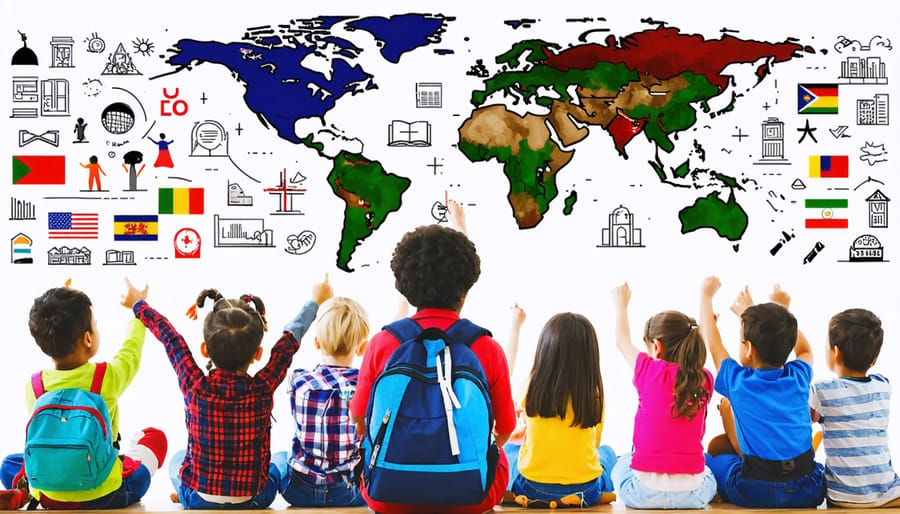In today’s interconnected world, education is no longer limited by borders or local traditions. Thanks to advances in technology, global mobility, and the common needs of cross-cultural understanding, the classroom has evolved into a powerful room where cultures and ideas clash.
These *global classrooms* shape the generation of students who think beyond their own environment and prepare to truly thrive in an international society. The rise of classrooms around the world Educational systems have traditionally been developed to reflect national identity and local culture.
Globalization is being redesigned, raising awareness that politics and society require more global capabilities than students need local knowledge. *Global Classroom* is not necessarily physically international. It is a local school that integrates international perspectives, a virtual platform that connects national students, or a curriculum that promotes cross-cultural awareness. Whether online or personal, what a global classroom defines is a commitment to the horizon.
Why global classrooms are important
1. **Promoting understanding of different cultures** Global classrooms can help students to expose themselves to different perspectives, understand cultural differences, and find similarities. This recognition is of great importance to peaceful coexistence and global cooperation.
2. **Encourage critical thinking** Dealing with different worldviews emphasizes assumptions and sharpens critical thinking. Students learn to question ideas from several contexts, compare and integrate them.
3. **Build communication skills** Students who learn to communicate in different languages through culture and different communication styles have prepared their students for global work and multicultural communities.
4. **Promoting empathy and global citizenship** When students experience global issues such as climate change, inequality and migration, they see themselves as part of a common human history. You are more likely to take responsibility and act in the common good.
5. **Global Workforce Preparation** Many of today’s careers must work with international teams or understand the global market. Global classrooms coordinate students with the soft skills and global literacy needed to thrive in these roles.
Tools and strategies that occur, Modern education systems and educators around the world include innovative tools for building global classrooms.
***Virtual Exchange Program**:
Platforms such as EPALS, PENPAL SCHOOLS, and EMPPATICO combine continental classrooms for collaborative projects and cultural exchange. ***International Curriculum Model**: Programs such as International Baccalaureate (IB) and Cambridge International on global topics and research-based learning. ***Multi-Linguistic Education**: Promotion of language learning not only improves communication, but also deepens cultural recognition. ***Cooperative Project**: Students work across borders with questions about sustainability, human rights, digital innovation and more.
*** GAST Speakers and Global Experts**:
Lectures from different countries bring real insights to the classroom. Actual effects In US classrooms, students worked with fellow Indians to investigate water shortages and support sensitization campaigns. In another case, Finnish schools worked with schools in Kenya to compare climate data and explore solutions tailored to local contexts. These experiences do not only teach science and geography that have built a sense of empathy, curiosity and a shared sense of responsibility. Issues and considerations Global classrooms are a powerful concept, but not without challenges.
***Digital Valley**: Not all students have access to the internet or the devices they need for global collaboration.
***Language barrier**: Communication can be difficult in all languages, but this is often an opportunity to learn.
***Cultural Sensitivity**: Educators should take care to avoid stereotypes and ensure respectful dialogue in a variety of settings.
***Curriculum Limitations**: Some education systems emphasize learning and national exams, leaving little space for global content. Overcoming these challenges requires thoughtful planning, integrated guidelines and professional development for teachers.
Conclusion: Window to the World Global classrooms have multiple trends. These represent transformative changes in fostering and strengthening the next generation. If students deal with peers from around the world, they will not only learn about other cultures, but also learn more about the world they share. In an age of division and uncertainty, global education is a ray of hope. We come from different places, but we are all part of the same story, together, but it reminds us that we can write a better future.

Leave a Reply